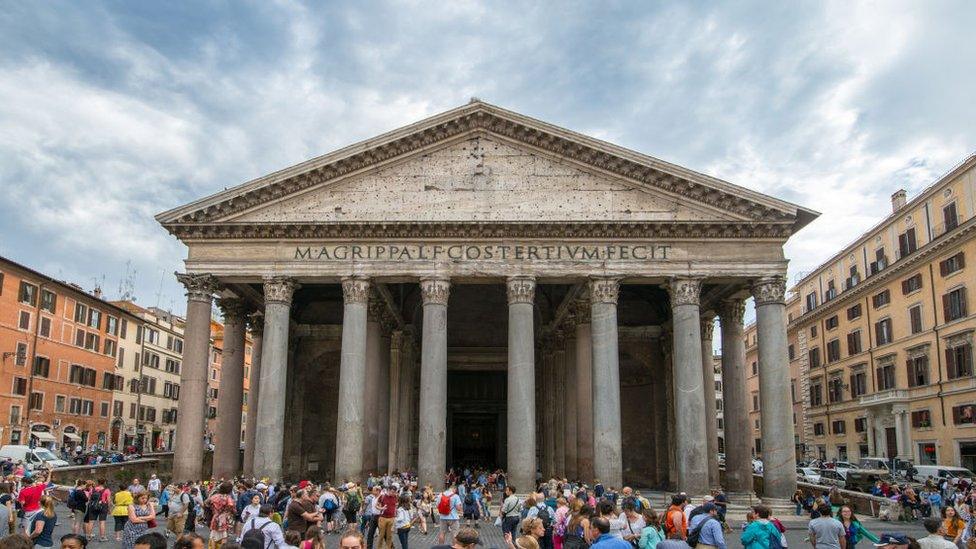Scientists discover special concrete behind Ancient Roman buildings
- Published
- comments

The Pantheon in Rome was built between AD 118 and 125 by Emperor Hadrian and is one of the city's popular tourist attractions
The Ancient Romans were known for many things, including being brilliant engineers and builders.
But have you ever wondered how some of their famous buildings have lasted for centuries and are are still so well preserved to this day?
Well, scientists think they may have finally found the answer!
It's all down to the special mixture of ingredients in the concrete, and experts think it's so good it could be recreated and used again in the future!
What did scientists find?
The Pantheon contains the world's biggest unreinforced concrete dome and is nearly 2,000 years old!
Concrete was one of the many inventions by the Ancient Romans.
Previous studies have found it to contain three ingredients: lime, volcanic ash and water.
It played an important part in Roman structures, helping them construct everything from arches, buildings, bridges and aqueducts.
Some of the structures the Romans built have lasted for centuries and remain looking pretty much the same to this day despite their age, such as the domed Pantheon in Rome which is nearly 2,000 years old!
What's even more surprising is that in many cases, Roman concrete has proven to be much longer-lasting than modern-day concrete, which can crumble within years or decades.
A group of scientists from the Massachusetts Institute of Technology (MIT) in America as well as Switzerland and Italy have found that secret lies in the lime and also how the ingredients were mixed together!
Rome's huge Colosseum dates back to the 1st century AD and would have been impossible to have been built without concrete
For the study, researchers looked at 2,000-year-old Roman concrete samples from one of Italy's city walls.
They found that a process known as "hot mixing" - in which the Romans mixed quicklime with water and the volcanic ash at high temperatures - is what gives the concrete its super strength.
Not only that but the lime also gives the concrete the ability to "self-heal" if applied to any structure.
This is because when exposed to water, lime goes through a chemical reaction meaning that any tiny cracks in the concrete are filled in - so the lime essentially acts like a glue and makes the structure stronger!
Experts say that these special Roman concrete features could be used today to produce more longer-lasting and sustainable modern concrete.
